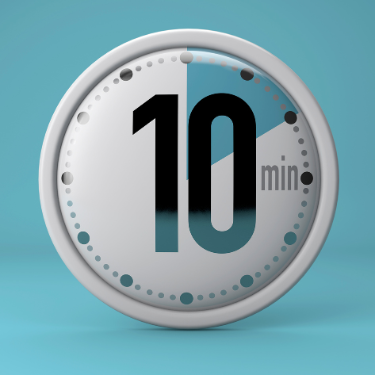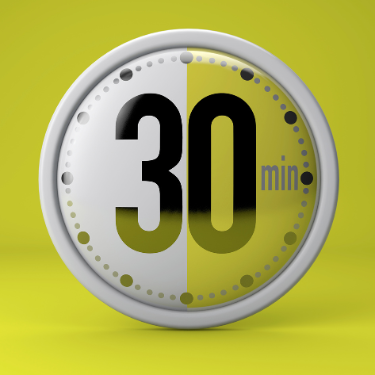Note: This article provides general information only and does not imply nor provide legal advice. For clarification of how the laws discussed herein impact your particular situation, it is recommended you seek guidance from legal counsel.
California is one of the few states that requires employers to provide employees with both meal and rest breaks. Having been in effect for many years, these employee labor laws have been amended over time, with one of the most significant amendments occurring in 2012.
New Meal Break Regulations
In February 2021, California’s Supreme Court further clarified details around meal breaks for nonexempt employees. In particular, the February 2021 court ruling states that employers cannot round employee time clock punches related to meal breaks.
The goal of the ruling is to ensure that employees receive their entitled 30-minute meal break, and rounding of timecards can infringe on the allotted 30 minutes. Noncompliant employers must pay employees one hour of wages (aka “Meal Premium”) for each day meal break regulations are violated.
Breaking It Down
For a full understanding of this issue, let’s look at California’s rest and meal break provisions:
Rest Breaks

By law, nonexempt workers must receive a paid 10-minute break after working for four hours or a “major fraction thereof.”
This means that when employees work for two hours, they’ve worked a major fraction of the four hours and are entitled to a break after two hours. The caveat is that the break isn’t mandated if an employee is scheduled to work less than three-and-a-half hours.
Meal Breaks

In addition to rest breaks, California law grants nonexempt employees a 30-minute meal break by the end of the fifth hour of work. (Note: employees can choose to forgo the break if they will not be working more than six hours.)
Employees are also granted a second break after working for 10 hours. However, if an employee takes the first break, the second break can be waived.
Noncompliant employers must pay employees one hour of wages (aka “Meal Premium”) for each day the meal break regulations are violated.
Devil in the Details
While the basics of the meal break sound simple enough – e.g. employees must get a break at five hours of work – the new ruling is very specific, down to the minute, about the five hours.
Specifically, employees are entitled to the meal break before the fifth hour is completed. Which means: if the employee completes their fifth hour or continues working into the sixth hour, even by one minute, a violation has occurred.
Also, breaks are intended to begin when employees are completely free of their duties, so the time it takes to walk from the work area to the break room should not be included in the break time.
The following scenarios show how the details impact compliance:
Scenario 1:
If Worker A begins her shift at 7 a.m., she must clock out by 11:59 a.m. for her meal break to be compliant. Clocking out at 12 p.m. is noncompliant, and Worker A is entitled to one hour of pay for the violation.
Scenario 2:
Worker B begins his shift at 1 p.m. and clocks out at 5:59 p.m. for his meal break. The beginning of the meal break is compliant. However, if Worker B clocks back in at 6:25, the break does not equal 30 minutes and is noncompliant. Worker B is entitled to one hour of pay for the violation.
Scenario 3:
Worker C’s workstation is a four-minute walk to the break room. Therefore, Worker C’s 30-minute break should not include the eight minutes required to walk to and from the break area. If those eight minutes are included, a violation has occurred, and Worker C is entitled to one hour of pay for the violation.
What Can You Do?
Here are a few things you can do to remain compliant:
-
Understand the legal requirements and seek legal counsel for clarification of your situation.
-
During onboarding, provide clear instructions to your employees about the regulations and make sure they understand their rights and how the regulations affect their shift times.
-
Coach employees on how to correctly clock in and out. Do not assume they will do this on their own.
-
Schedule meal breaks with some time to spare vs. beginning one minute before the fifth hour is completed. This helps ensure employees actually clock out before they’ve worked five hours.
-
Consider providing meal periods of more than 30 minutes to ensure people have time to walk to and from the break area.
-
Review your policies and practices and look for potential violations so they can be remedied as soon as possible.
-
Regularly audit time records to ensure meal breaks are being provided and meal premiums are being paid when a meal break is not provided.
-
Use a timekeeping system that accurately tracks meal period punches and can report daily on violations. Avoid using paper and group timecards, as these cannot track meal period violations.
Read more about the requirements in these two articles published by SHRM: Society for Human Resources Management:
California Employers Should Review Time-Keeping Practices for Meal Breaks, published 3/11/2021.
Navigating California’s Meal and Rest Break Requirements, published 3/14/2020.
These articles provide more details and also discuss exceptions to the rules, which may apply to your organization.
Nelson Connects' Commitment
As your business partner, we are committed to understanding and adhering to California’s many employment regulations. If you have questions, please don’t hesitate to contact your Nelson Connects representative. We are always here to discuss strategies for helping your teams remain compliant.
If you need assistance with staffing or workforce solutions, contact the professionals at Nelson Connects today.

